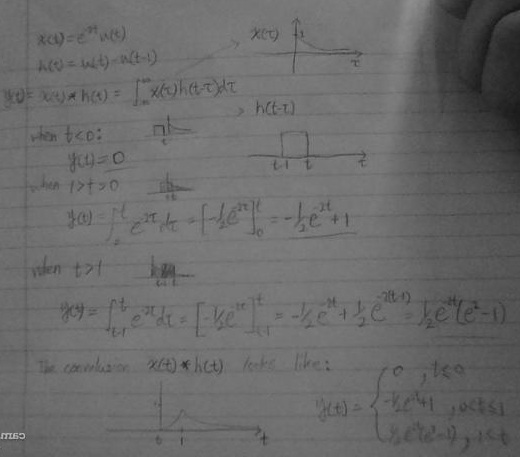1. Example of:
a.) Linear and non-linear system
Linear system: y[n] = x[n]+x[n-1]
Non-linear system: y(t) = ln(x(t))
b.) Casual and non-casual system
Causal system: y(t) = 1+ x(t)sin(πt)
Non-causal system: y(t) = x(-t)
c.) System with memory and without memory:
System with memory: y(t) = ∫ x(t)dt from 0 to t
System without memory: y[n] = √(x[n])
d.) Invertible and non-invertible system
Invertible system: y[n] = x[1-n]
Non-invertible system: y(t) = |x(t)|
e.) Stable and Unstable system
Stable system: y(t) = e^(-t)x(t)u(t)
Unstable system: y(t) = x(t) + y(t-1)
f.) Time variant and time invariant system
Time variant system y[n] = x[n]e^[jωn]
Time Invariant system y(t) = 2^(x(t))
2. Graphical Convolution problem:
x(t) = e^(-2t)u(t)
h(t) = u(t)-u(t-1)
Find y(t) = x(t) * h(t):
3. What is the fundamental period of sin(6/5t)+e^(j3(1-t))?
sin(6/5t) has period of 5π/3
e^(j3(1-t)) = e^(j3)(cos(3t)-jsin(3t)) which has period of 2π/3
The fundamental period is the LCM which is 10π/3


